
Hannah Gluckstein left her family home in 1916 to go to Lamorna a village in west Cornwall to paint with three of her fellow St John’s Wood art students, including her best friend, a female who simply wanted to be known as Craig. In the late nineteenth and early twentieth centuries Lamorna became well-liked by artists of the Newlyn School. Gluck was delighted to be amongst a group of fellow artists such as Samuel John Lamorna Birch who on the advice of his friend and fellow artist Stanhope Forbes adopted the soubriquet “Lamorna” to differentiate him from a contemporary artist of his, Lionel Birch.
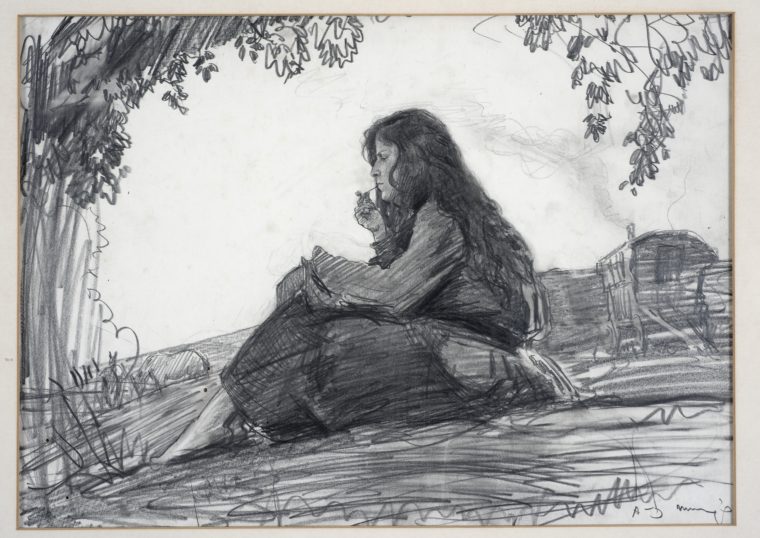
Other artists in residence at the time were Laura Knight and her husband Harold, and Alfred Munnings who completed a sketch of Gluck dressed in a gypsy costume smoking a pipe.
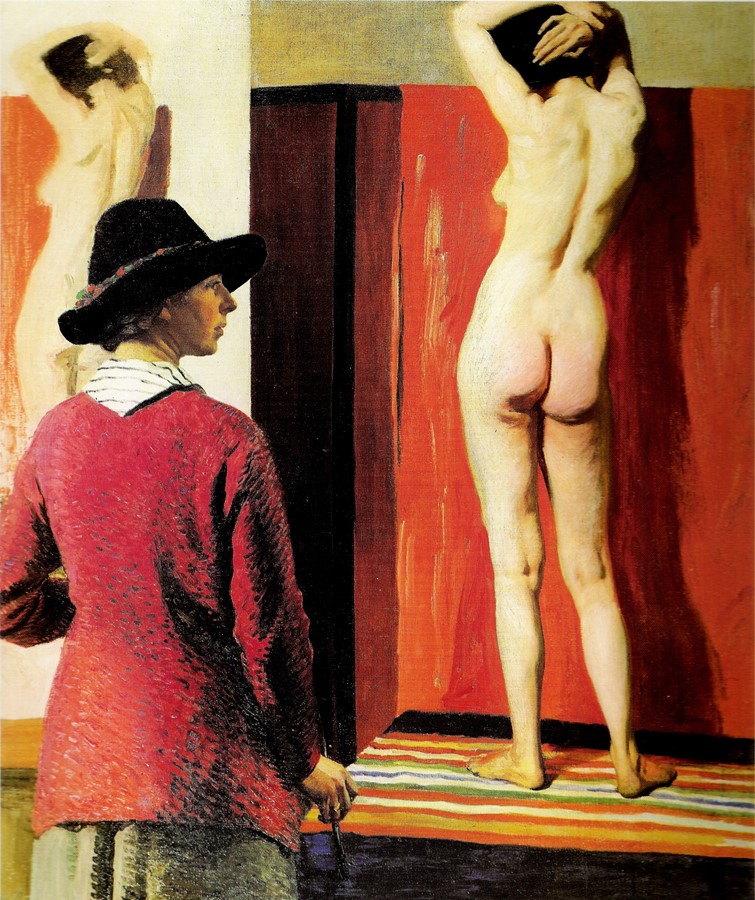
At Lamorna, Gluck soon made friends with Ella Naper, a thirty-year old jeweller, potter, designer, and painter. Ella was a friend of Laura and Harold Knight and was featured as a nude model in Laura’s 1913 painting, Self-portrait, and Nude. Laura described Ella in her 1936 book, Oil Paint and Grease Paint:
“…[Ella was] an adorably lovely creature who when she chose, wore workman’s trousers, smoked a clay pipe and bathed naked off the rocks…”

Gluck stayed for a time in an old hut close to Dozmare Pool on Bodmin Moor with Ella and maybe her demeanour and dress rubbed off on her. The moor was often a wild place during adverse weather and offered spectacular landscape painting opportunities.
Gluck stayed in Cornwall in the summers and she and Craig would return to a flat in London, which Gluck’s father had financed, during the winters. Slowly she built up a large collection of paintings, fifty-seven in all, which she showed in 1924 at her first solo exhibition at the Dorien Leigh Gallery in London. All were sold, and with the money raised she was able to move from her Earls Court studios to a larger studio in Tite Street in the borough of Chelsea, once used by the American artist James Abbott McNeill Whistler.

It was around 1923 that Gluck and her good friend, the American artist Beatrice Romaine Brooks arranged to do portraits of each other. Romaine’s portrait of Gluck was entitled Peter, a Young English Girl. Why the title? Although Hannah Gluckstein worked under the name of Gluck she preferred to be called Peter within her circle of friends. Gluck’s androgynous persona is accentuated by her clothing. We see her with a short, boyish haircut wearing a stylish jacket.

Both Brooks and Gluck were attracted to women and the current style of menswear-inspired fashion suited them. It was the wearing of such clothes that allowed upper class lesbians to identify one another while at the same time staying unobtrusive. Many looked upon this way of dressing as just a rich woman’s idiosyncratic take on wealth and fashion. Gluck’s portrait of Romaine Brooks was never finished. Gluck had set up a large canvas and invited Brooks round to her studio but things did not go well between sitter and artist. Gluck wrote a note about the sitting:
“…Romaine wasted so much sitting time in making a row that at last I was only left an hour in which to do what I did – but my rage and tension gave me almost superhuman powers…… she insisted I should do one of my little pictures. I refused so she left me with the unfinished portrait. However I had to give away many photographs of it to her friends…”
Gluck painted over the unfinished canvas !!
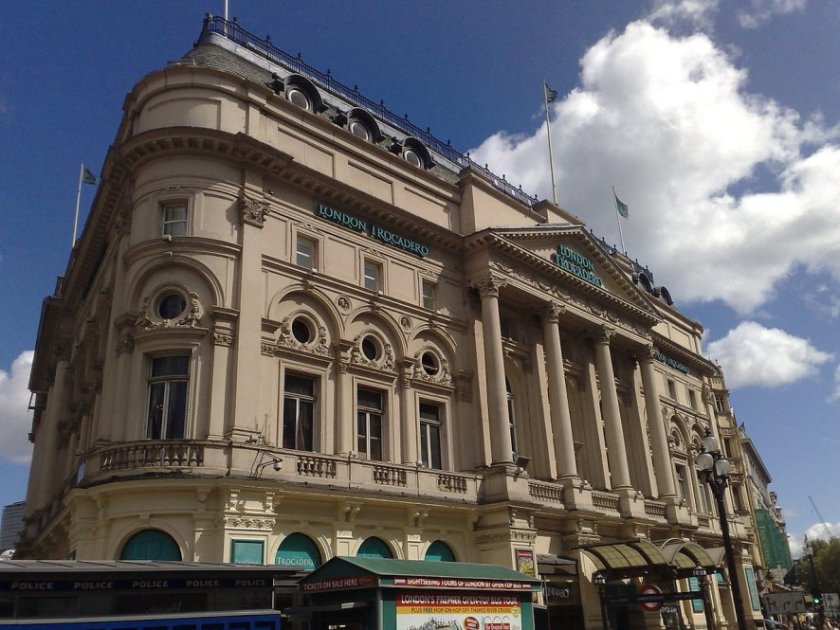
One of the most popular night-spots in London between the wars was the London Trocadero. Originally opened in 1896 it was just a restaurant, owned by J.Lyons and Co., one of Gluck’s uncles’ businesses. In 1924 her uncle Montague Gluckstein asked Charles Cochran, an English theatrical manager and impresario, to stage a cabaret in the grill room of the restaurant. From then until the start of World War II cabarets ran continuously at this venue and one of the regular attendees was Gluck.
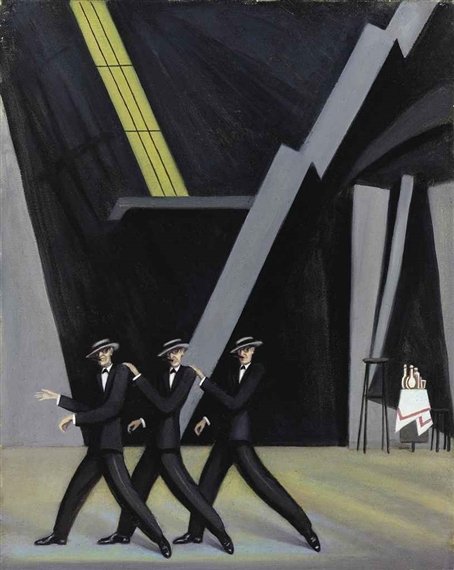
In her 1926 painting, Gluck depicted one of Cochran’s song and dance acts, The Three Nifty Nats performing their dance routine. For Gluck this was one of her true art deco pieces. This along with forty-three other works by her featured in her Stage and Country exhibition which opened at the Fine Art Society in Bond Street in April 1926. The paintings on show were a mix of her life in Cornwall and her life in London. For the opening event Gluck had styled her hair in an Eton Crop, a haircut which often involved trimming off a woman’s flowing locks in favour of the tapered look sported by men. She was dressed in breeches, a man’s soft hat, and smoked a pipe. The art reviewer, Onlooker, for the Daily Graphic wrote about his initial encounter with Gluck at the opening of the exhibition:
“…I addressed him naturally as “Mr Gluck”……It was with considerable shock that I found myself being answered in a soft voice, essentially feminine. I do not know that I should altogether like my own wife or my daughters to adopt Miss Gluck’s style of dressing her hair or clothing her limbs, but I do know that I should be proud of them if they could paint as well as Miss Gluck paints…”

Another painting on show at the exhibition was her self-portrait, entitled Self-portrait with Cigarette which she had completed the previous year. The exhibition was a great success and her work was highly praised by the art critics of the day. She was lauded as a painter of her time and strangely no report gave mention of her connection with the prosperous and very wealthy Gluckstein family. It would be interesting to know what Gluck’s father thought of the exhibition with his daughter’s picture wearing men’s clothing splashed across many of the daily newspapers. Perhaps he was thankful that the Gluckstein name did not figure in the media outpourings! All Gluck’s works on show were sold. This prestigious London gallery was to become the home for all her future exhibitions.

In 1926, Gluck’s father gave his daughter twenty thousand pounds and bought her a new place to live – Bolton House, Windmill Hill in the heart of Hampstead Village. It had been the home of the poet and dramatist Joanna Baillie for the last fifty years of her life. It was a large three storey red-brick Georgian building with an impressive wide drive. Gluck went to live there along with a housekeeper, a maid, and a cook. She also had a car which gave her easy access to her beloved Cornwall and her “Letter Studio” in Lamorna which was once owned by Laura Knight.

Gluck did not remain alone in Bolton House for long as in 1928, Sybil Cookson, the granddaughter of Sir James Crichton-Bowne, a leading British psychiatrist, came with her two young children to live with Gluck. On visiting Bolton House to see his granddaughter he had seen Gluck’s paintings and commissioned her to paint his portrait which she completed that year. Sybil Cookson was a journalist and romantic novelist. She had left her husband, a well-known racing driver, to go and live with Gluck. She was fascinated and in awe of Gluck. She believed she was living with an artistic genius. Soon she was running Bolton House for Gluck. During the summers Gluck, Sybil and her two children would go and stay in Lamorna.
As a journalist, Sybil also wrote about boxing, and her stories of the ancient art form of pugilism induced Gluck to paint several boxing scenes, one of which was entitled Baldock versus Bell at the Albert Hall. Teddy Baldock was a very popular Eastender, and one time world champion. Whenever he fought numerous coaches carrying his supporters left Poplar in the East End of London to cheer him. When he met Archie Bell at the Albert Hall on 5 May, 1927, no less than 52 crowded coaches made their way out of the East End, heading for Kensington like an Army convoy.

Gluck’s brother Louis returned home from the war in 1918 and went to live with his parents. He stayed with them until he married in 1926. There was a major problem with Louis marriage to his wife Doreen as she neither got on with Gluck nor her mother-in-law. Gluck’s father died on November 30th, 1930 at the age of 74. Right up to the end Joseph Gluckstein hoped his daughter would change her ways. He must have realised his end was near as he was able to sort out all his financial affairs before he died. He also wrote a farewell letter to his wife Francesca. In it he wrote poignantly about Gluck:
“…I hope that our dear Hannah may so develop as to be like her dear mother, which to my mind embraces the wish that she will be a model woman…”
At the same time, he wrote a letter to his son Louis:
“…And now my dear boy adieu. I am most grateful for all the happiness you have given me from the day of your birth. You have been a true model son and I can say that no son has ever given to his parents more happiness than you have to yours…”
He did not write a letter to his daughter.
Sadly, their father’s death marked the end of the very good relationship Gluck had had with her brother Louis who, along with his mother, had been made the main trustee of his sister’s finances and this upset and annoyed her to have her younger brother control the purse strings.
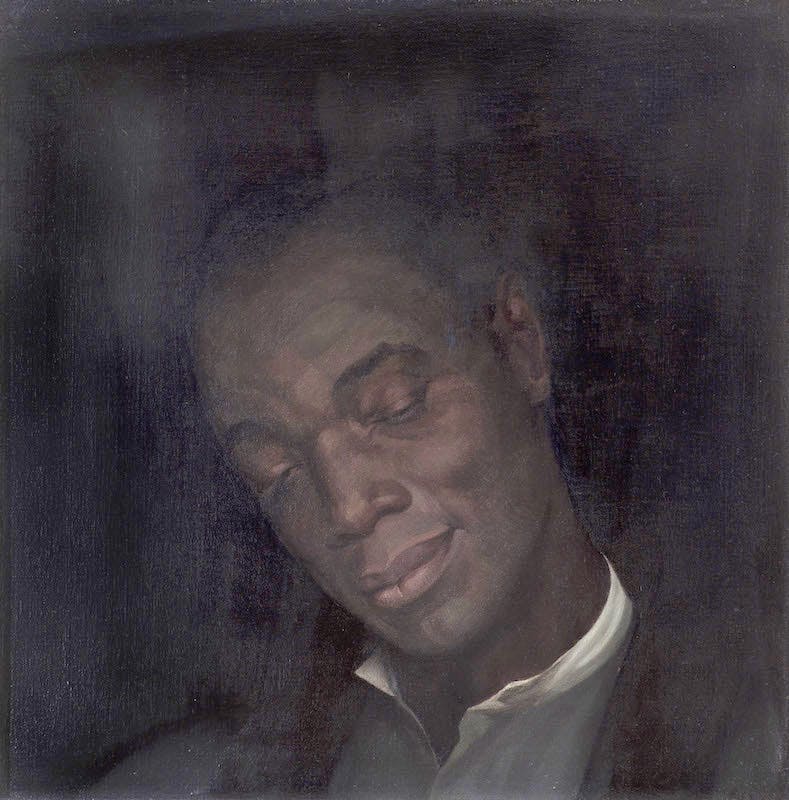
In 1927 she completed a portrait entitled Spiritual which came into being because of a bet. At a party Gluck had been talking about painting and how light played a big part in any work. A friend of hers commented that it would be impossible to paint a black face against a black background. Gluck was up for the challenge and advertised in a newspaper for a black person to model and her picture of him successfully proved that she could portray a black person against a black background.

Gluck enjoyed life at Bolton House and converted a small outhouse at the bottom of her garden into her studio. It had once been home to a small pony. However, in 1931 the outhouse was demolished and in its place was built a magnificent new studio designed by her architect friend, Edward Maufe, later Sir Edward Brantwood Maufe. The new building cost Gluck £1500. To get from the house to the studio she had to walk over a Maufe-designed stone-paved garden flanked by flowerbeds and a central lily pond which received its water from a concrete fountain. Bolton House and the new studio gained a lot of media attention because of their beauty and in the House and Gardens magazine of July 1935 a three-page spread was set aside extolling the beauty of the two buildings:
“…Miss Gluck, the well-known painter, is the happy possessor of an unspoiled Georgian House and a completely modern and efficient studio, separated from it only by a paved courtyard, with flower beds reflected in a shallow lily pool…”

In 1945 Gluck completed a portrait of Maufe at work in his studio.

Margaret Watts was the daughter of the illustrator Arthur Watts, who was a neighbour of Gluck’s in Hampstead. Gluck painted a portrait of Margaret Watts aged 21 depicting her as a fashionable young woman. Margaret later became a costume designer.
……..to be continued
In the final part of my look at the life and art of Gluck I will be examining how two females she had affairs with influenced her work and how her love for one of them culminated in one of her best known and best loved works of art.
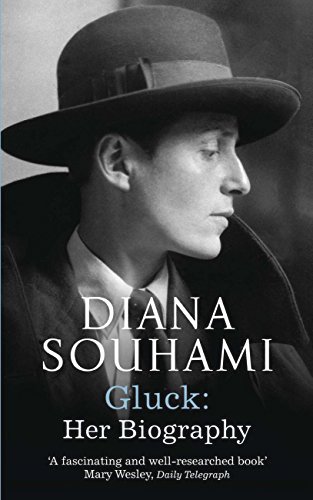 Most of the information for this blog came from the excellent book – Gluck: Her biography by Diana Souhami.
Most of the information for this blog came from the excellent book – Gluck: Her biography by Diana Souhami.
For a much fuller account of Hannah Gluckstein’s life, treat yourself to this biography.
